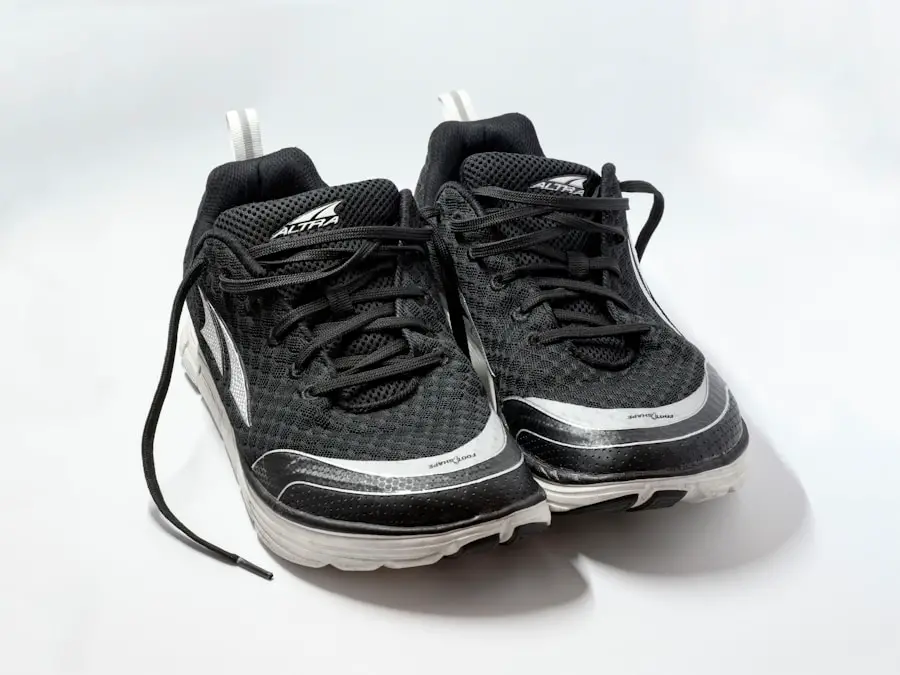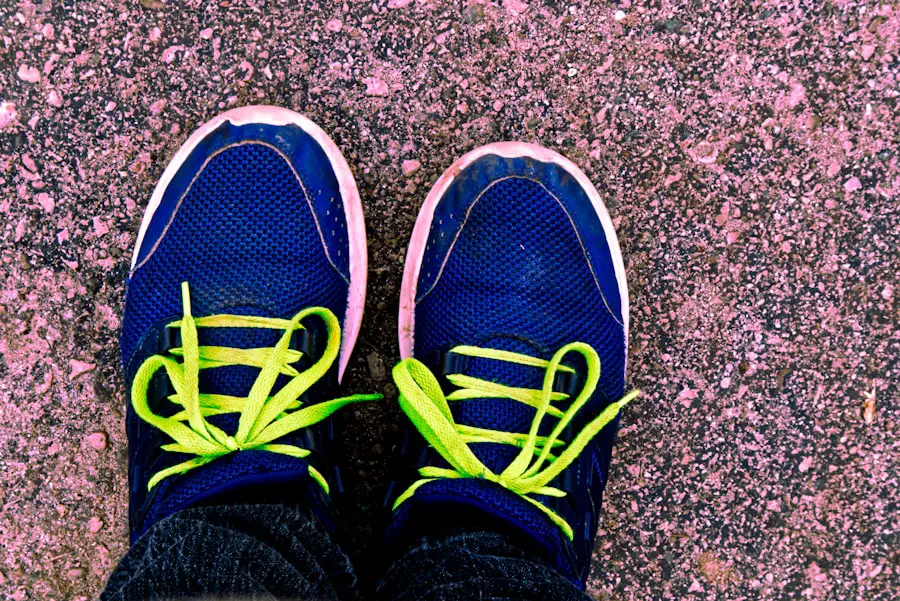When it comes to footwear, particularly in the realm of athletic and outdoor shoes, understanding the differences between various types is crucial for making informed choices. Athletic shoes can be broadly categorized into several types, including running shoes, cross-trainers, hiking boots, and casual sneakers. Each category is designed with specific features that cater to different activities and environments.
For instance, running shoes are engineered to provide optimal cushioning and support for forward motion, while cross-trainers are built to accommodate a variety of movements, making them suitable for gym workouts and sports that require lateral movement. The materials used in the construction of these shoes also vary significantly. Running shoes often incorporate lightweight mesh uppers for breathability and synthetic materials for durability, while hiking boots typically feature leather or heavy-duty synthetic materials to withstand rugged terrains.
Understanding these distinctions not only helps consumers select the right footwear for their needs but also enhances performance and reduces the risk of injury. For example, wearing running shoes on a hiking trail can lead to inadequate support and increased fatigue, while using hiking boots for a casual jog may result in discomfort due to their heavier construction.
Key Takeaways
- Understanding the differences between various types of footwear is crucial for making an informed decision.
- Support and stability are essential for preventing injuries and providing comfort during physical activities.
- Traction and grip are important factors to consider, especially for outdoor and sports activities.
- Durability and longevity are key for getting the most value out of your footwear investment.
- Comfort and fit are crucial for ensuring that your footwear feels good and performs well during use.
Support and Stability
Support and stability are paramount considerations when selecting footwear, especially for activities that place significant stress on the feet and ankles. Running shoes are designed with varying levels of arch support to accommodate different foot types—neutral, overpronation, and underpronation. This tailored support helps maintain proper alignment during the running gait cycle, reducing the risk of injuries such as plantar fasciitis or shin splints.
The stability features in running shoes often include medial posts or firmer foam in the midsole, which help control excessive foot motion. In contrast, hiking boots prioritize ankle support and stability on uneven terrain. Many models come equipped with high-top designs that wrap around the ankle, providing additional protection against twists and sprains.
The stiff soles of hiking boots also contribute to stability by preventing excessive flexing, which can lead to loss of balance on rocky or slippery surfaces.
This difference in design philosophy highlights the importance of selecting footwear that aligns with the specific demands of the activity at hand. A runner may find that a shoe with too much ankle support hinders their performance, while a hiker may experience discomfort without adequate support.Traction and Grip

Traction is a critical factor in footwear performance, particularly for outdoor activities where surfaces can be unpredictable. Running shoes typically feature rubber outsoles with varying tread patterns designed for road or trail running. Road running shoes often have a smoother outsole for efficient movement on pavement, while trail running shoes incorporate deeper lugs for enhanced grip on loose or uneven surfaces.
The choice of rubber compounds also plays a role; softer rubbers provide better grip but may wear out faster, while harder rubbers offer durability at the expense of traction. Hiking boots take traction a step further by utilizing specialized outsoles that are engineered for rugged terrains. Vibram soles, for example, are renowned for their exceptional grip on both wet and dry surfaces, making them a popular choice among outdoor enthusiasts.
The lugs on hiking boot outsoles are often larger and more aggressive than those found on running shoes, allowing for better bite into dirt, mud, and rocky surfaces. This difference is crucial; a hiker navigating steep inclines or slippery descents requires footwear that can maintain grip under challenging conditions, whereas a runner may prioritize speed and efficiency on smoother paths.
Durability and Longevity
| Product | Durability (years) | Longevity (years) |
|---|---|---|
| Car Tires | 5-7 | 50,000-75,000 |
| Refrigerator | 10-15 | 15-20 |
| Roofing Shingles | 20-30 | 20-30 |
| LED Light Bulbs | 15-20 | 15,000-25,000 |
Durability is an essential consideration when investing in footwear, particularly for those who engage in high-impact activities or traverse challenging environments. Running shoes are typically constructed with lightweight materials that prioritize breathability and comfort; however, this can sometimes come at the expense of longevity. The foam cushioning in running shoes tends to compress over time, leading to a decrease in performance and support.
Many runners find themselves replacing their shoes every 300 to 500 miles to maintain optimal performance. On the other hand, hiking boots are built with durability in mind. The materials used—such as full-grain leather or heavy-duty synthetic fabrics—are designed to withstand abrasions from rocks, roots, and other natural elements encountered on trails.
Additionally, many hiking boots feature reinforced toe caps and heel counters that protect against impacts and enhance longevity. While they may be heavier than running shoes, their robust construction often means they can last several years with proper care. This durability makes them a worthwhile investment for avid hikers who frequently tackle challenging terrains.
Comfort and Fit
Comfort is subjective but undeniably critical when it comes to footwear selection. Running shoes are designed with various cushioning technologies aimed at providing a plush feel during runs. Brands like Nike utilize their Zoom Air technology to offer responsive cushioning that adapts to the runner’s foot strike.
Additionally, many running shoes come with removable insoles that allow wearers to customize their fit further by adding orthotics if needed. Conversely, hiking boots often require a break-in period due to their stiffer construction and materials. A well-fitted hiking boot should feel snug around the heel while allowing enough room in the toe box to prevent discomfort during descents.
Many hikers prefer models with adjustable lacing systems that allow for a more personalized fit across the instep. The importance of fit cannot be overstated; an ill-fitting shoe can lead to blisters, calluses, or even more severe foot issues over time. Therefore, trying on multiple sizes and styles is essential to find the perfect match for individual foot shapes.
Terrain and Usage

Hiking Boots: Engineered for Off-Road Conditions
Hiking boots, on the other hand, are specifically engineered for off-road environments where stability and traction are crucial. They excel in environments ranging from rocky mountain trails to muddy forest paths.
Hybrid Models: The Best of Both Worlds
The robust construction of hiking boots provides protection against sharp objects and uneven ground while offering the necessary grip to navigate challenging landscapes safely. For individuals who frequently transition between urban environments and natural settings, hybrid models that blend features from both categories may be worth considering.
Weight and Flexibility
Weight plays a significant role in how footwear performs during various activities. Running shoes are typically lightweight to facilitate speed and agility; this is achieved through the use of minimalistic materials that do not compromise on cushioning or support. The flexibility of running shoes allows for natural foot movement during the running gait cycle, which is essential for maintaining efficiency over long distances.
In contrast, hiking boots tend to be heavier due to their durable construction and added support features. While this weight can be a disadvantage when it comes to speed, it provides necessary stability on uneven terrain. Some modern hiking boots have begun incorporating lightweight materials without sacrificing durability or support, appealing to those who seek a balance between weight and performance.
Ultimately, the choice between lightweight flexibility and heavier stability will depend on individual preferences and the specific demands of the activity.
Price and Value
Price is often a determining factor when selecting footwear; however, it is essential to consider value rather than just cost alone. Running shoes can range from budget-friendly options to high-end models equipped with advanced technologies designed for serious athletes. While it may be tempting to opt for cheaper alternatives, investing in quality running shoes can lead to better performance and reduced injury risk over time.
Hiking boots also vary widely in price based on materials, brand reputation, and specialized features such as waterproofing or insulation. While high-end models may come with a hefty price tag, they often offer superior durability and comfort that can justify the investment for avid hikers who spend significant time outdoors. Ultimately, understanding the long-term benefits associated with quality footwear can help consumers make informed decisions that align with their budget while ensuring they receive the best value for their investment in performance and comfort.
When deciding between hiking sneakers or running shoes for walking, it’s important to consider the terrain and distance you’ll be covering. According to a recent article on TakeTravelInfo, hiking sneakers are typically better for rougher terrain and longer distances, providing more support and stability. On the other hand, running shoes may be more comfortable for shorter walks on smoother surfaces. Ultimately, the best choice will depend on your individual needs and preferences.
Love travel? Join Our Facebook Community
FAQs
What are the differences between hiking sneakers and running shoes?
Hiking sneakers are designed with more support and stability for uneven terrain, while running shoes are designed for forward motion and cushioning.
Which is better for walking: hiking sneakers or running shoes?
Hiking sneakers are generally better for walking, as they provide more support and stability for varied terrain.
Can running shoes be used for hiking?
While running shoes can be used for light hiking on well-maintained trails, they may not provide the same level of support and traction as hiking sneakers on more rugged terrain.
Are hiking sneakers suitable for running?
Hiking sneakers are not ideal for running, as they are designed for stability and support on uneven terrain rather than the forward motion and cushioning needed for running.
What factors should be considered when choosing between hiking sneakers and running shoes for walking?
Consider the terrain, level of support needed, and the specific activity (walking vs. hiking) when choosing between hiking sneakers and running shoes for walking.
